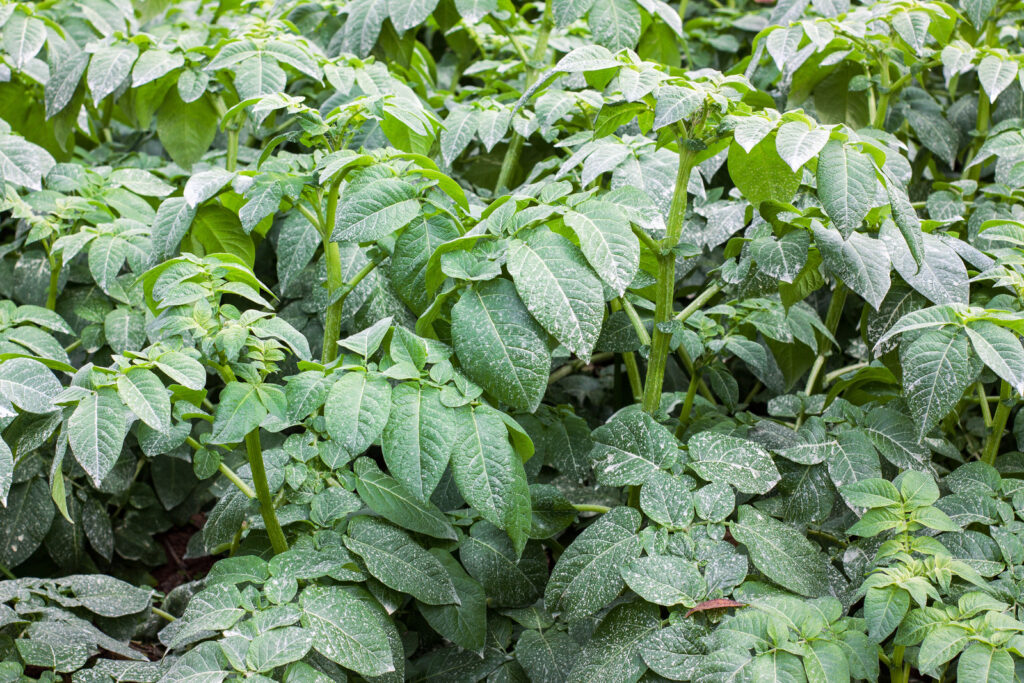Growing potatoes in mild winter or tropical climates presents unique challenges compared to temperate regions. High temperatures, humidity, and extended growing seasons can affect plant growth and tuber development. After years of experience gardening in Sonoma Valley and studying warmer regions, I’ve developed strategies to help potatoes thrive in these climates.

1. Choosing the Right Varieties
- Early-season varieties: Ideal for tropical and mild winter areas as they mature quickly before the hottest months. Examples: Red Norland, Yukon Gold.
- Heat-tolerant varieties: Varieties bred for tropical conditions, such as Kennebec or some local hybrids, resist disease and tuber stress.
2. Timing Planting
- In mild winter regions, plant potatoes in late fall or early winter to take advantage of cooler months.
- In tropical climates, plant during the coolest, driest period if possible, or use raised beds/containers to avoid waterlogging.
3. Soil Preparation
- Use well-draining soil to prevent rot in high rainfall areas.
- Add organic matter to improve moisture retention and fertility.
- Raised beds or mounded rows help with drainage and heat management.
4. Temperature Management
- Potatoes prefer 60–70°F for tuber development.
- In tropical climates, provide partial shade or mulch to reduce soil temperature.
- Avoid planting during peak heat to prevent stunted growth and bolting.
5. Watering and Feeding
- Maintain consistent soil moisture without waterlogging.
- Use drip irrigation or soaker hoses to reduce disease risk.
- Feed with balanced organic fertilizer early and potassium-rich fertilizer during tuber formation.
6. Pest and Disease Management
- Tropical climates can favor pests like aphids, whiteflies, and potato tuber moths.
- Rotate crops and plant resistant varieties to reduce disease pressure.
- Monitor for fungal infections, especially in humid areas, and remove affected foliage promptly.
7. Harvesting Tips
- New potatoes: Harvest when plants flower.
- Mature potatoes: Wait until foliage yellows and dies back.
- In warm climates, avoid prolonged soil exposure for mature tubers to prevent greening.
Gardener’s Tip:
In my experience, growing potatoes in mild winter or tropical conditions works best in raised beds with heat-tolerant varieties and careful timing. Mulching and consistent watering are essential for preventing stress and maximizing yield.
Potato Growing Calendar – Mild Winter & Tropical Climates
| Growth Stage | Timing (Mild Winter) | Timing (Tropical) | Key Actions |
|---|---|---|---|
| Planting | Late fall / early winter | Coolest, driest months | Use early or heat-tolerant varieties; plant in raised beds or containers |
| Sprouting / Early Growth | 2–3 weeks after planting | 2–3 weeks after planting | Keep soil consistently moist; monitor for pests |
| First Hilling | When plants 6–8 inches tall | When plants 6–8 inches tall | Add loose soil around stems; avoid burying leaves |
| Second Hilling | 4–5 weeks after first hilling | 4–5 weeks after first hilling | Maintain 4–6 inches soil coverage to encourage tuber growth |
| Flowering / Tuber Development | 8–10 weeks | 8–10 weeks | Apply potassium-rich fertilizer; monitor moisture and temperature |
| New Potato Harvest | Flowering stage | Flowering stage | Harvest tender tubers carefully; leave some to mature further |
| Full Maturity | 14–16 weeks | 14–16 weeks | Harvest mature tubers once foliage dies back; cure before storage |

